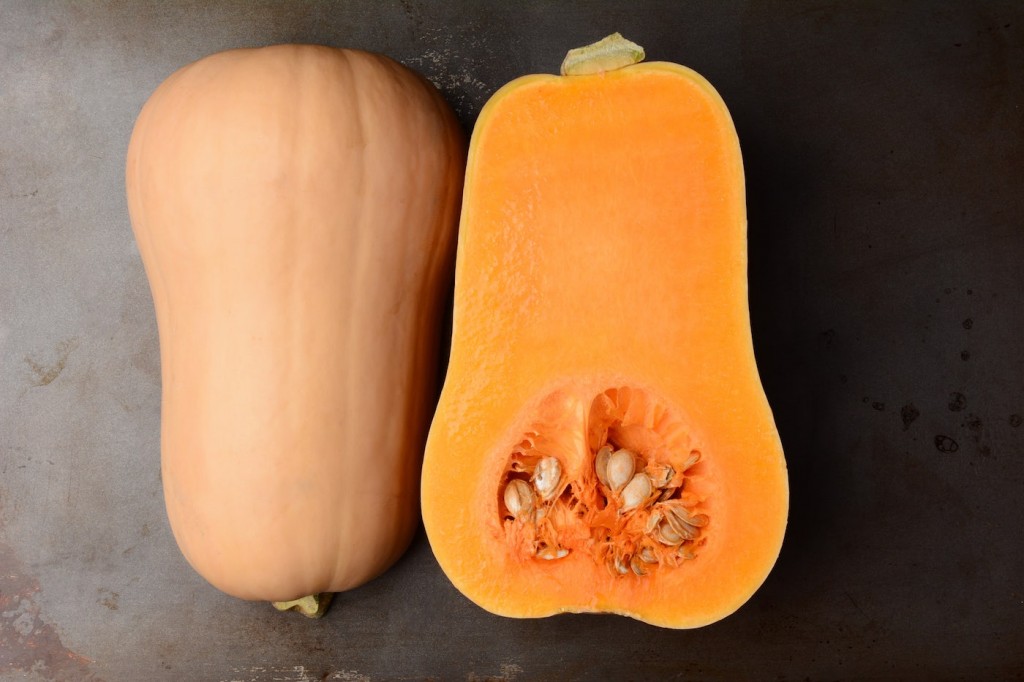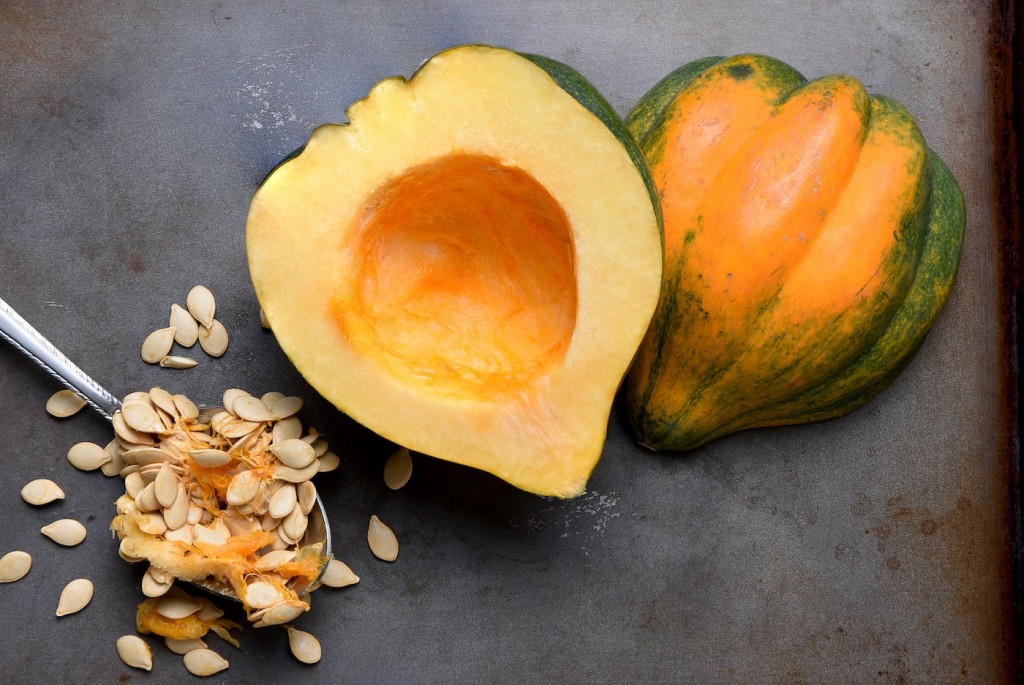I’ve talked to a lot of people lately who are intimidated by winter squash. The first barrier they site is the impenetrable shell of skin: Whereas summer squash can be eaten skin, seed and all, only the flesh is edible on winter squash. The second is the daunting variety. Which are edible, what do they taste like, what can you substitute and how do you cook them?
We've got answers here in our winter squash guide … to butternut and beyond.

Choosing a squash: In general, you want a squash that is firm and heavy for its size. If you feel any soft spots or mold, take a pass.
What’s inside? Winter squash are nutritional powerhouses loaded with beta carotene, potassium, folate, lutein and fiber, with very few calories. Their flesh is both filling and satisfying enough to make a meal in and of itself.
Varieties
Butternut
Butternut squash is a lovely buff-colored squash that’s shaped like an oblong gourd with a bubble at one end. Of all the winter squash, Butternut has some of the softest skin (along with Delicata and Acorn); you can easily peel it off with a Y-peeler. Its flesh ranges from pale Dreamsicle to deep orange and is creamy and nutty when cooked. And there’s a good amount of it; the entire neck is seedless.
How to use it: Butternut is a super-flexible squash and my favorite for cubing and roasting. Halve, seed, brush with oil and roast flesh side down at 400 for 50-60 minutes; or peel, cube, toss with olive oil and seasonings and roast at 450 for 40-50 minutes, turning occasionally. Use roasted squash in risotto, soup or as a spread for sandwiches or pizza.
Substitute: acorn or Buttercup.
Acorn
It used to be acorn squash were dark green with an occasional orange mottle, but nowadays this squash comes in all sorts of colors and patterns, like the spotted Carnival variety above. Although acorn’s skin is even thinner than butternut, its deep grooves make it more difficult to peel. Its flesh is sweet, but stringier than the rest.
How to use it: I like to cut this squash into wide slices or wedges and roast them with a sticky-sweet glaze. Halve, seed and brush with oil. Then slice or roast halves at 425 for 20-40 minutes.
Substitute: butternut or delicata.
Kabocha
Most kabocha squash are somewhat squat, with lumpy, shiny, dark green skin. Although I’ve also been finding kabochas with pale blue skin (above) which look a bit like miniature Hubbards. Regardless of the external color, the flesh of a kabocha is deep reddish-orange and dense in both texture and flavor when cooked.
How to use it: Kabocha makes a wonderful roasting squash and I find it melds well with Eastern-leaning flavors. Halve, seed, brush with oil and roast flesh down at 400 for 60-75 minutes. Scrape out flesh and use in soups, pasta or a mash. Or seed, stuff and roast whole.
Substitute: Buttercup.
Sweet Dumpling
Shaped like a miniature pumpkin with pale yellow, green-striped skin, Sweet Dumplings have deep orange flesh that’s mild, dry and sweet—almost like a sweet potato.
How to use it: The main draw of Sweet Dumplings is that they’re so darned cute. Stuff and roast them whole or ladle in soup for serving. Seed and roast at 400 F for 50-60 minutes.
Substitute: kabocha or buttercup.
Delicata
Delicata are beautiful oblong squash with gently-ridged, butter-colored skin and dark green stripes. It’s the most perishable squash of the bunch because its skin is so thin (so thin, in fact, it’s edible). The flesh is light, sweet and kind of cakey-moist in a good way.
How to use it: Halve and seed the squash, brush with oil, cut into slices and roast at 400 F for 20-30 minutes.
Substitute: acorn squash.
Buttercup
Similar in appearance to a kabocha squash, but with slightly smoother, lighter green skin that grows a “turban” as it ages. Buttercup's flesh is bright orange, smooth and creamy with voluptuous flavor and hazelnut overtones when cooked.
How to use it: Halve, seed, brush with oil and roast flesh down at 400 F for 60-75 minutes. Scrape out flesh and use in soups, pasta or a mash. Or seed, stuff and roast whole.
Substitute: butternut or kabocha.



















